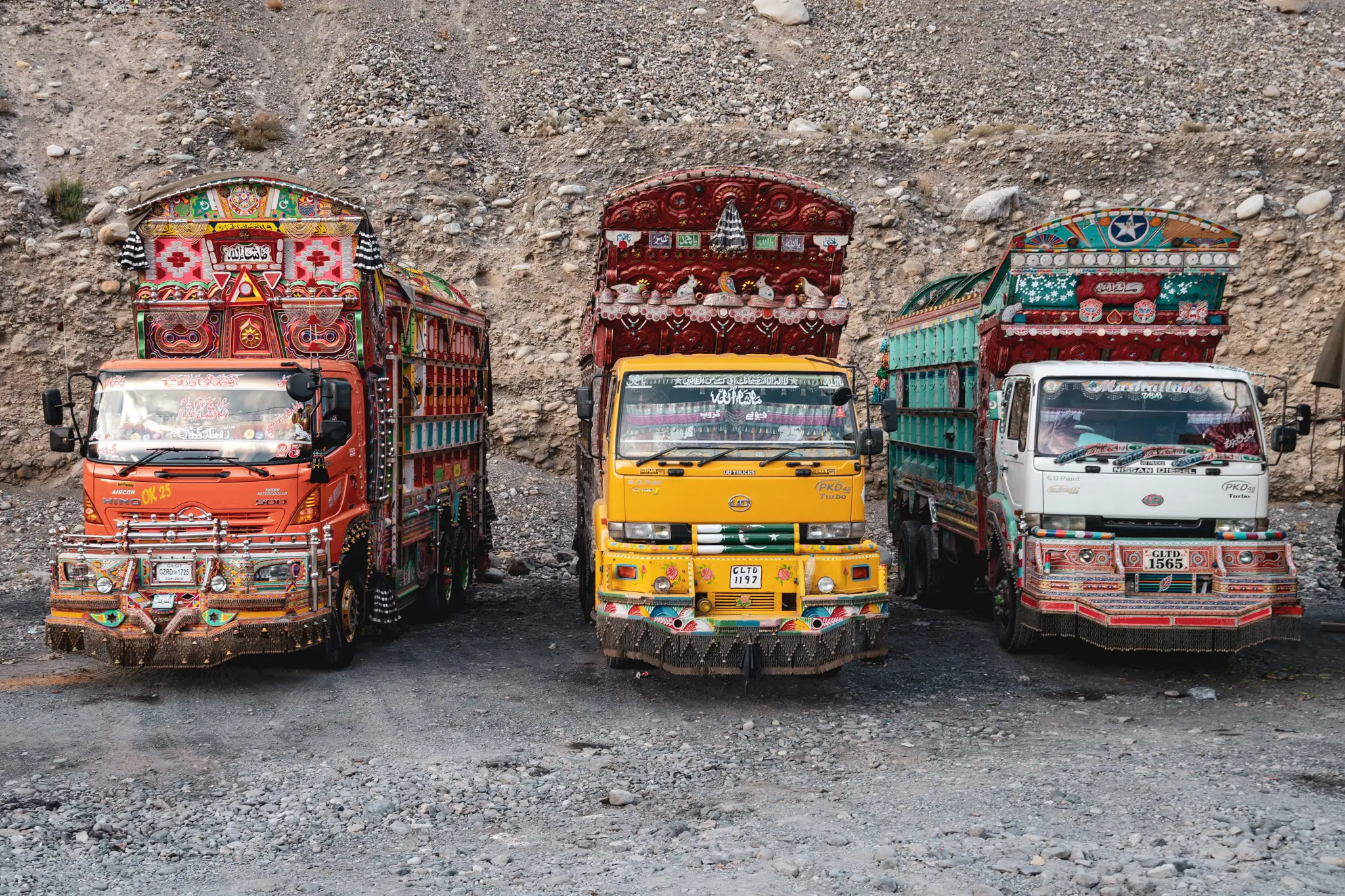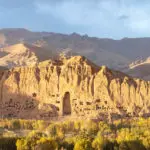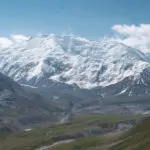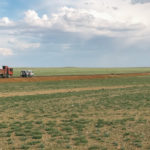Everything you need to know about travelling the Karakoram Highway. Covers transportation, accommodation, safety, visas, and anything else that you’ll need. Includes a detailed 2-week itinerary!
Stretching over 1,300 kilometers between Pakistan and China and topping out at 4,693 meters above sea level, the Karakoram Highway is the highest paved road in the world and a once in a lifetime road trip for adventure lovers.
The Karakoram Highway was one of my favourite parts of my month-long journey backpacking around Pakistan – along the highway, you get to see massive 7,000+ meter peaks, beautiful blue lakes, and meet some of the most hospitable people on our planet.
This detailed guide will explain everything you need to know to plan your Karakoram Highway trip. Let’s get right into it!
Contents
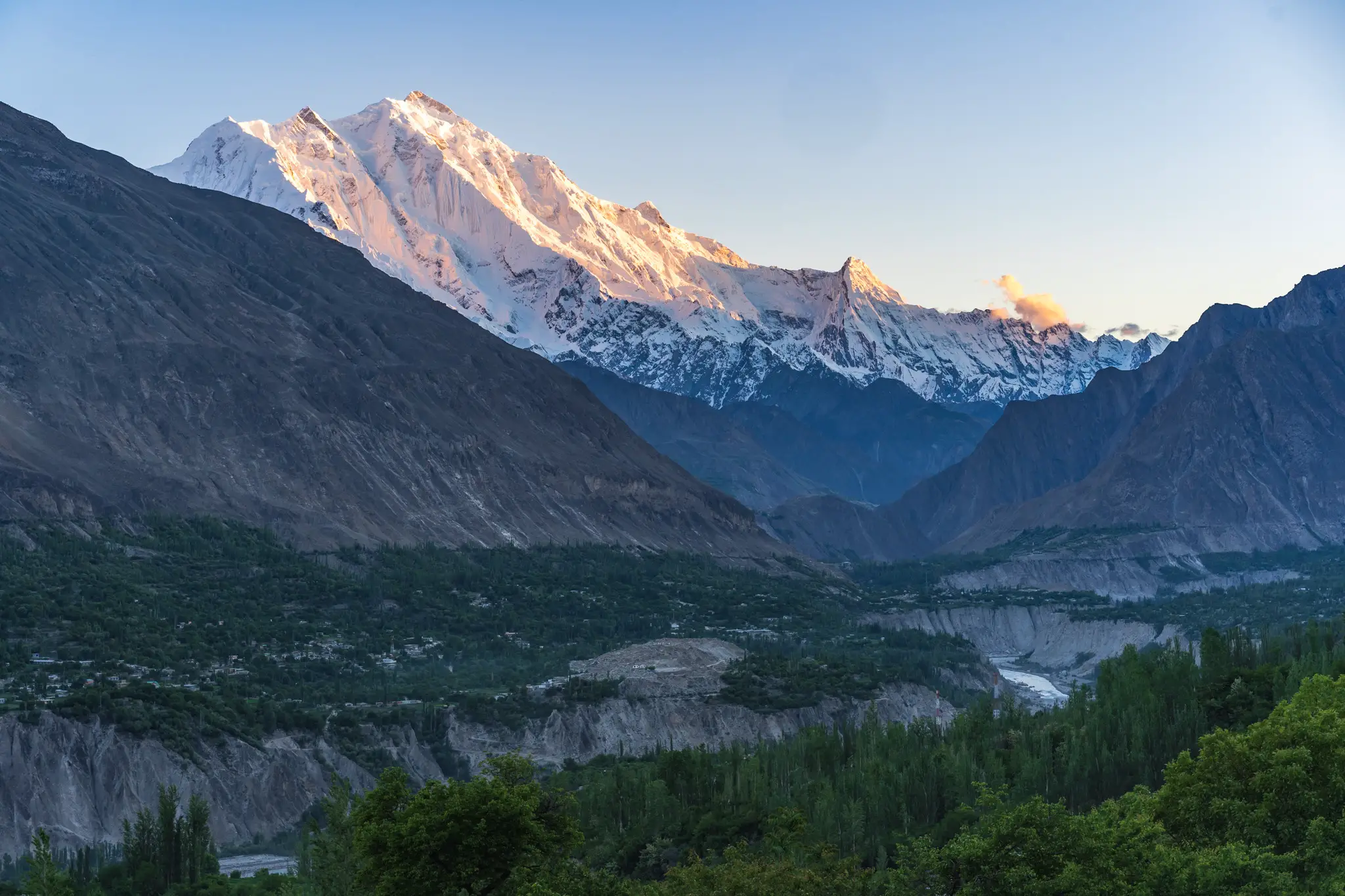
What is the Karakoram Highway?
While there has been trade between Pakistan and China through the Karakoram mountains for centuries, construction of the modern-day Karakoram Highway wasn’t completed until 1979, and the highway wasn’t opened to the public until 1985.
The highway begins in Islamabad, Pakistan and travels 1,300 kilometers through the Karakoram to the Chinese city of Kashgar. It’s highest point is the Khunjerab Pass, which also happens to be the international border crossing between Pakistan and China.
As a marvel of civil engineering, the Karakoram Highway is often referred to as the Eighth Wonder of the World – I’d definitely nominate it as a contender!
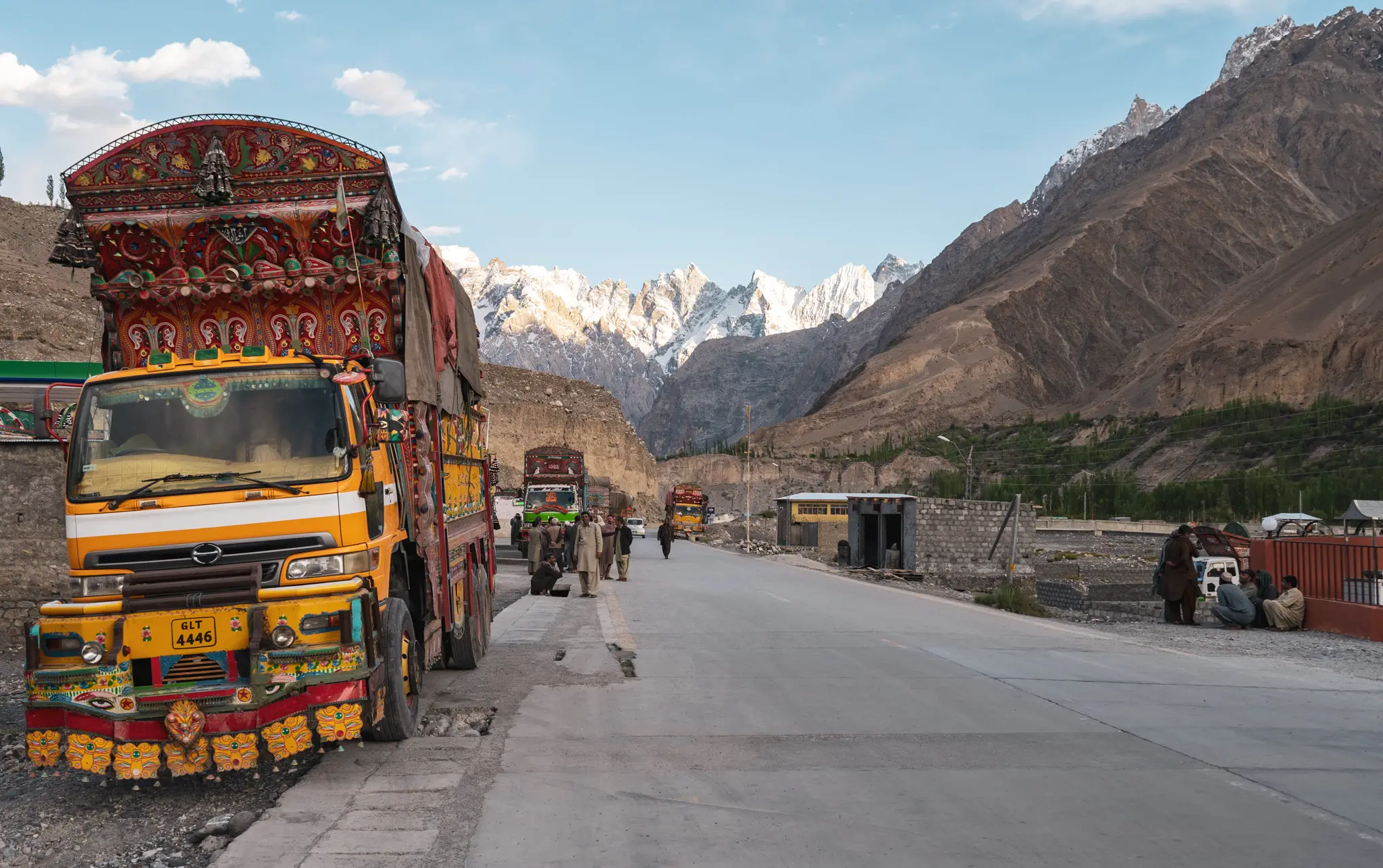
Practical Info
Here’s some practical info that you should know before you travel the Karakoram Highway (KKH).
Is it safe?
Safety is a big question that comes up whenever I suggest the Karakoram Highway to other travellers I meet, and I understand why.
Pakistan is certainly not the most well-known travel destination, and much of our exposure to it is via western media that portrays it quite negatively.
However, after a lot of research and a month of travelling in the country, I’m happy to say that Pakistan isn’t nearly as dangerous as you might think.
While I can’t claim that all of Pakistan is safe, the provinces of Punjab and Gilgit-Baltistan (where the Karakoram Highway travels through) are extremely safe. The Karakoram Highway doesn’t go anywhere near the dangerous areas of Pakistan – you don’t need to worry.
On the other end of the Karakoram Highway, we have China’s Xinjiang province. I’m sure you’ve already heard a bit about what is going on there. At the moment, Xinjiang is still safe for travellers, although it is basically a police state – it’s not very fun to travel in. I suggest that you spend most of your time in Pakistan, and only a little bit in Xinjiang to finish up the KKH journey.
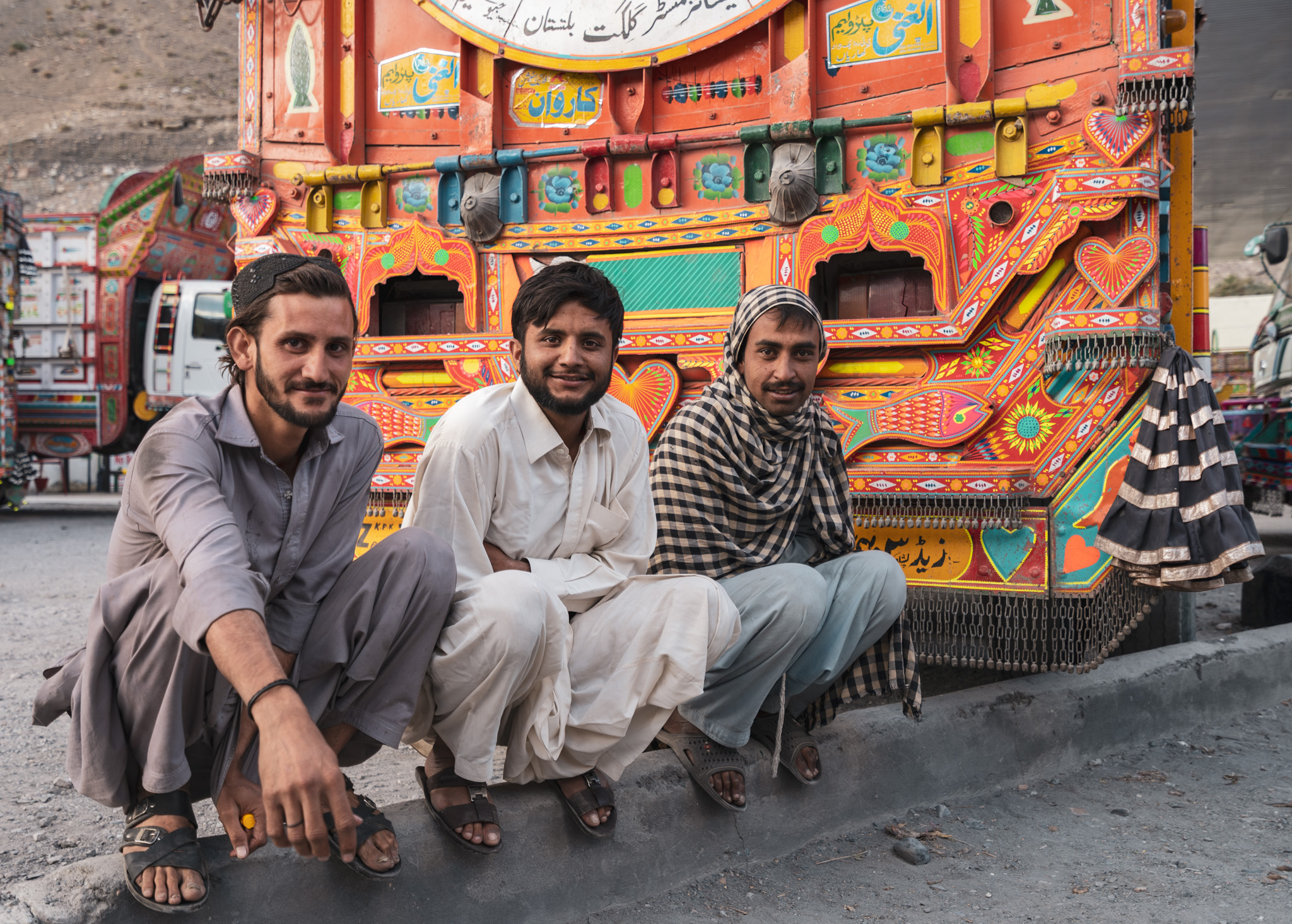
Travel Insurance
No matter where you go, you should always have travel insurance – Pakistan and China are no exception.
I personally use and recommend World Nomads. It’s designed for adventurous travellers with cover for overseas medical, evacuation, baggage and a range of adventure sports and activities (important if you plan on doing any hikes while you’re in the Karakoram!).
When to travel the Karakoram Highway
Don’t plan a Karakoram Highway trip in the winter – it won’t be possible! The Khunjerab Pass section is completely closed to all traffic between November and March of every year due to snow accumulation.
While you could still technically visit just the Pakistan side of the highway in the winter, it will be pretty cold and travelling might be difficult if there’s bad weather.
Spring and Fall are the perfect times to travel the Karakoram Highway – temperatures at lower elevations aren’t too hot, in the mountains it won’t be too cold. In the Spring, you’ll get to see a ton of cherry blossom trees in Northern Pakistan, and in Fall the entire trip will be through beautiful golden-coloured trees.
Summer is also a good time to travel the KKH, although it’ll be a bit busier with Pakistanis trying to escape the summer heat by heading to the mountains.
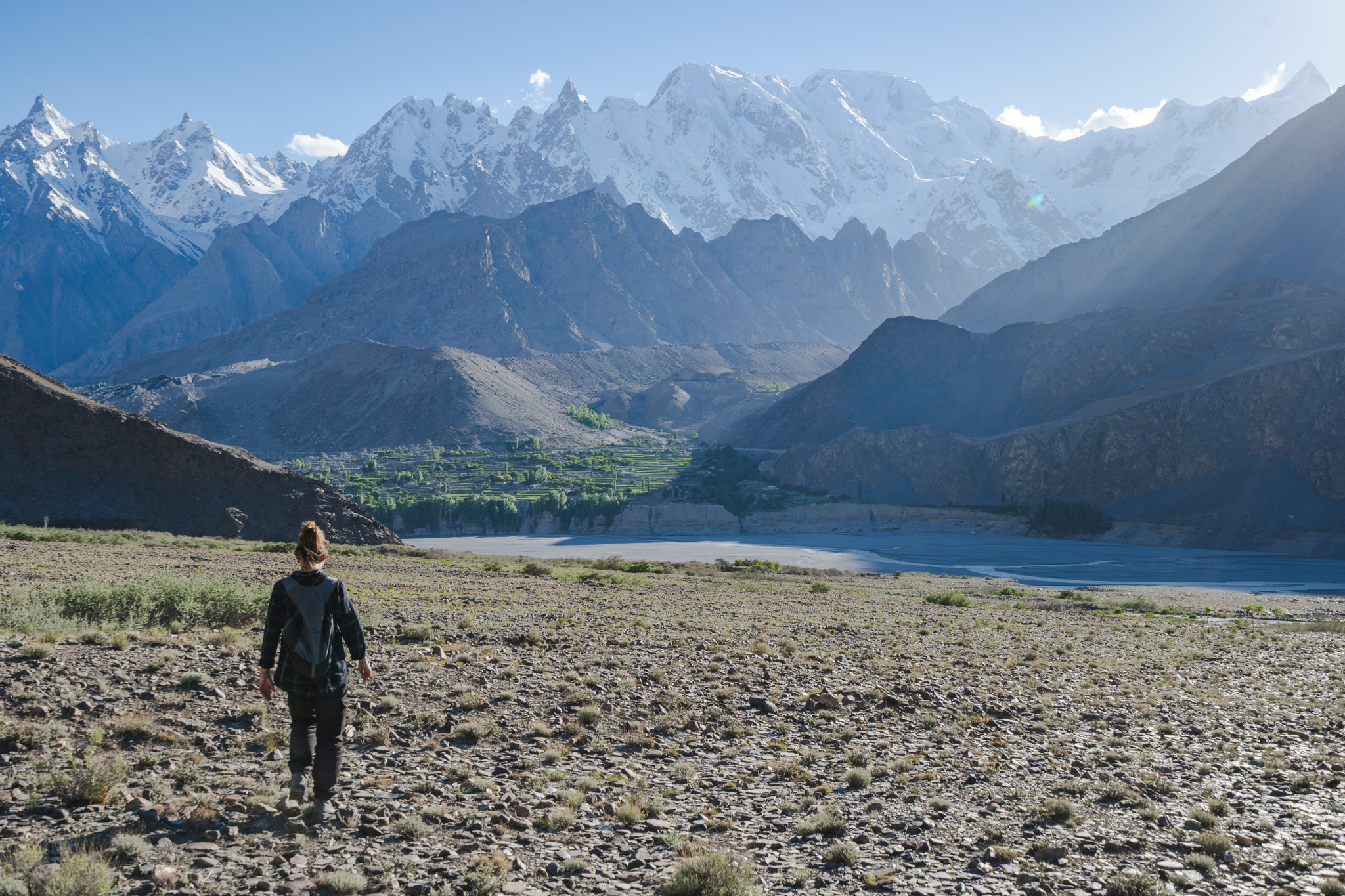
Travel Costs for the Karakoram Highway
Travelling the Karakoram Highway is very cheap. On a backpacker’s budget, costs should average out to around $30 per day. In Pakistan, you can get by with $20 per day, and China will cost you around $40 a day. This is if you’re using public transportation or hitchhiking. Hiring a private driver will cost substantially more.
Overall, it’s the KKH is a very affordable trip – especially if you’re already in that part of the world.
Based on my $30 per day average, a 2-week Karakoram Highway trip can be done for as little as $400 (excluding visas and international flights). Not bad!
Other Things to Know
Internet access isn’t great – Staying connected along the KKH is a bit of a challenge. SIM Cards that can be purchased in Islamabad don’t work in the mountains (you’ll need a SCOM SIM for that, which you can purchase in Gilgit – but it’s still very slow). Very few guesthouses offer WiFi in Northern Pakistan, so don’t count on being able to do much other than sending the odd WhatsApp message.
In China, there is cell reception everywhere – but you won’t be able to purchase a SIM card in Xinjiang as a foreigner, so you’ll need to rely on the WiFi at your accommodation. Remember that the internet in China is behind the Great Firewall, so purchase a VPN before your trip!
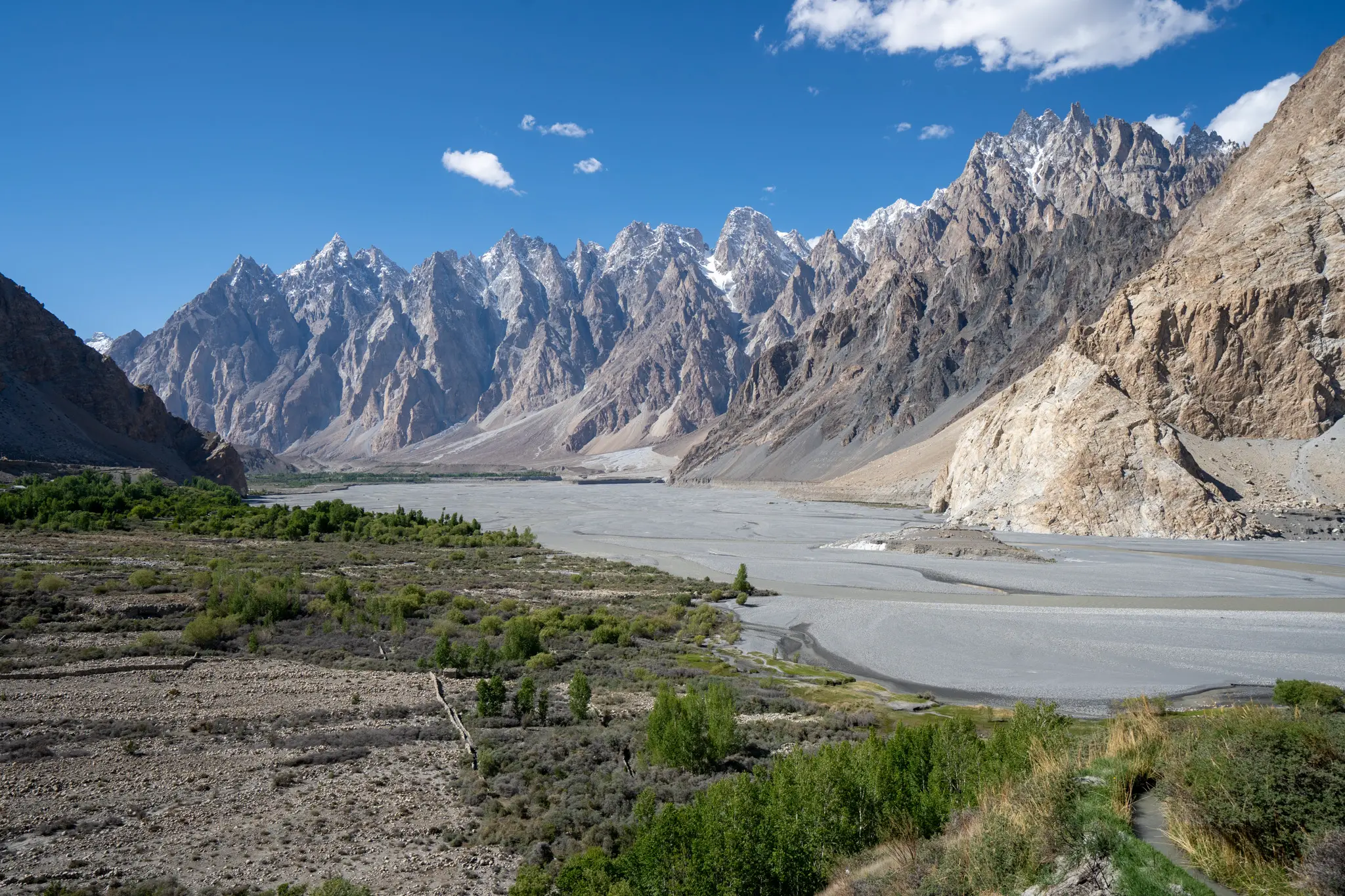
Be aware of the high altitude – Due to the extreme altitudes along the Karakoram Highway, developing acute mountain sickness (AMS) is possible if you travel too quickly. My itinerary will take things slow enough to allow you to acclimatize properly, so don’t worry about this too much. Just stay hydrated and get plenty of rest during your trip!
How long does it take? While you could technically travel the Karakoram Highway in just a couple of days, you wouldn’t get to see much along the way. I’d say that a minimum of 10 days is required for an enjoyable trip, but I’d recommend 14 days to make the best of this bucket-list destination.
Plan your visas in advance – You’ll likely need a visa for both Pakistan and China – be sure to sort those out ahead of time. Pakistan now has an e-visa system making things a lot easier than they used to be, and the Chinese visa process is pretty well-documented elsewhere on the internet.
ATMs are not always available – I recommend withdrawing as much cash as you think you’ll need in Islamabad (and a bit extra, to be safe). It’s not easy to find functional ATM machines in Northern Pakistan, and running out of cash would be a real bummer.
In Tashkurgan and Kashgar, there are plenty of ATM machines. You can also carry some backup USD, as it is exchangeable almost everywhere.
2-Week Karakoram Highway Itinerary
Here’s a sample 2-week itinerary to help you plan your Karakoram Highway trip!
Islamabad (2 nights)
Start off your Karakoram Highway adventure in Pakistan’s capital city of Islamabad. There isn’t a ton to do in Islamabad, but it’s a good place to get situated in.
When you’re in Islamabad, be sure to pay a visit to the incredible Faisal Mosque (at sunset for the best views!) and take a trip over to neighbouring Rawalpindi.
Where to stay in Islamabad
Budget: Islamabad is home to one of the few backpacker style hostels in Pakistan. It’s called Backpackers Hostel and Guesthouse and is run by Haris, a very friendly dude who knows a lot about travel in Pakistan.
Check the latest Backpackers Hostel and Guesthouse prices here
Mid-range: Shelton’s Rezidor Islamabad is a great mid-range hotel in a good location. It includes a nice breakfast buffet as well!
Check the latest Shelton’s Rezidor Islamabad prices here
Luxury: If budget isn’t of much concern, treat yourself to a stay at the fancy Islamabad Marriot.
Check the latest Islamabad Marriot prices here
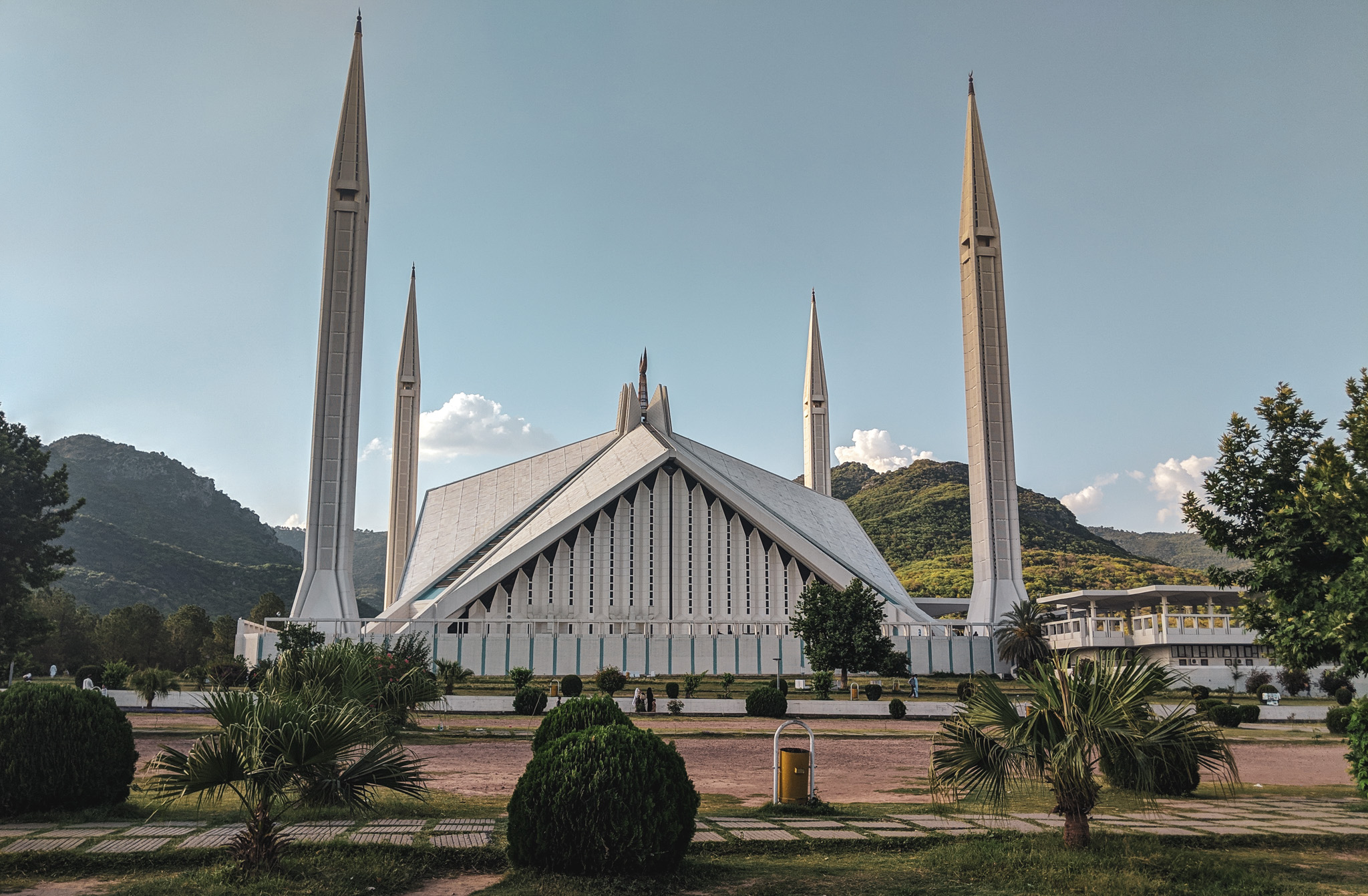
Bus to Gilgit (1 night)
It’s best to fast-track the first portion of the Karakoram Highway from Islamabad to Gilgit. The real beauty of this road trip lies in Gilgit-Baltistan, so we shouldn’t waste much time getting there.
There are overnight buses operated by NATCO that run directly from Islamabad to Gilgit. They’re actually pretty comfortable, and the best way to travel between the two cities when you’re short on time.
In the transportation section further down I’ll give you more info on pricing and schedules for this bus.
Fairy Meadows (2 nights)
Fairy Meadows is certainly one of the must-see sights in Pakistan. It’s a stunning alpine meadow located at the base of Nanga Parbat, the world’s 9th highest peak (8,126 m).
I actually didn’t get a chance to visit Fairy Meadows on my first trip to Pakistan, as my visa was running out and unfortunately I didn’t have enough time. It’s at the very top of my list for next time, though!
It’s easy to get to Fairy Meadows from Gilgit, and with two nights there you’ll be able to catch some awesome views of Nanga Parbat and enjoy the crisp mountain air.
Where to stay in Fairy Meadows
I’ve heard great things about Fairy Meadows Greenland Resorts. They have proper cottages and also an area that you can pitch tents.
Gilgit (1 night)
After taking in the mountains at Fairy Meadows, it’s back down to Gilgit to rest for a night before heading further up the Karakoram Highway.
In Gilgit, you can use some slow WiFi to upload some photos and have your last decent shower in Pakistan.
Where to stay in Gilgit
The most popular backpacker place in Gilgit is the Medina 2 Hotel. It costs Rs. 1500 for a double room, and has a cheap restaurant attached to it. Very friendly and helpful staff – I highly recommend staying here when you’re in Gilgit!
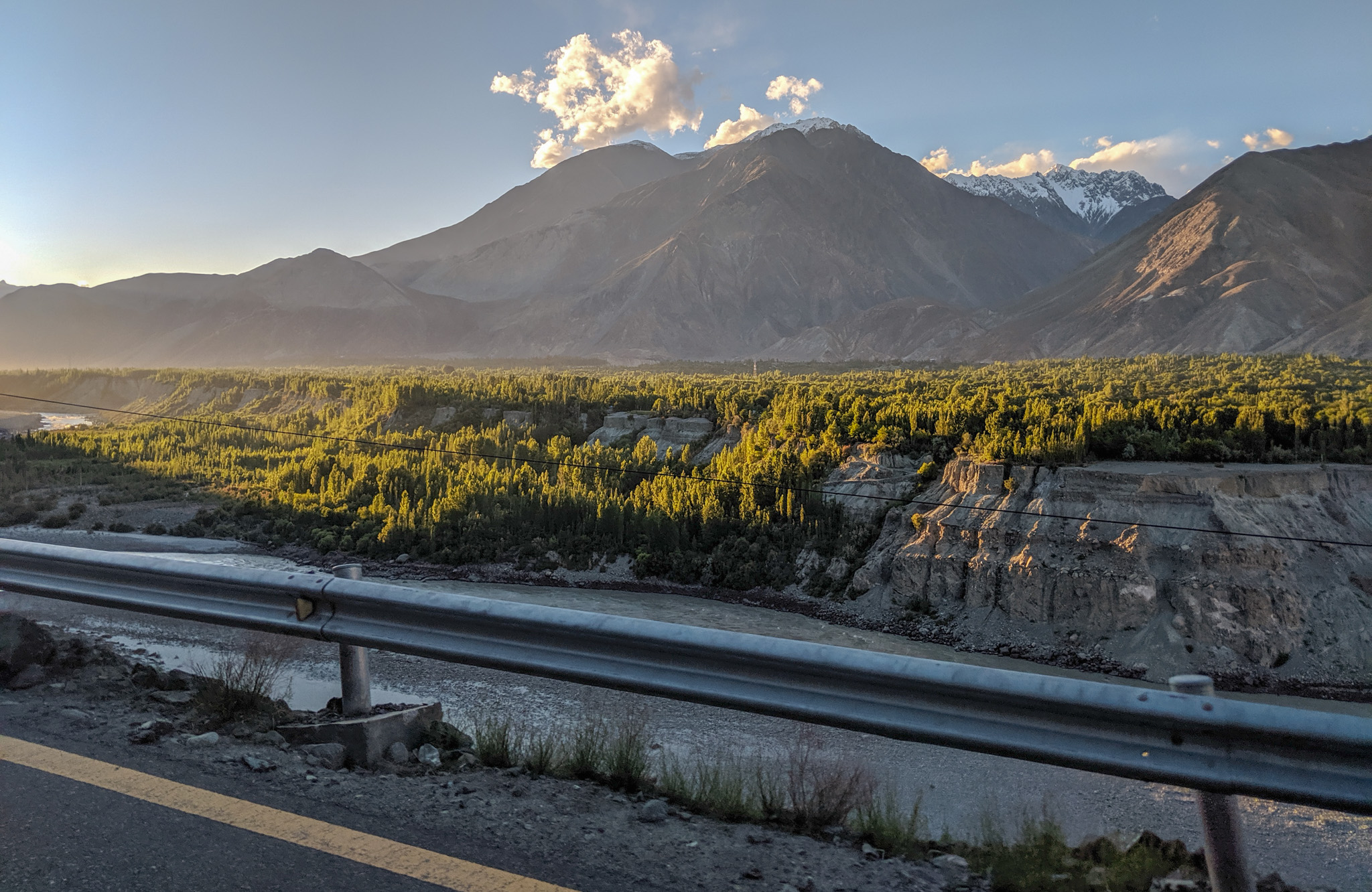
Minapin & Rakaposhi Base Camp (2 nights)
Minapin is a quaint little town located at the base of Rakaposhi (7,788 m).
The main reason to visit Minapin is to embark on the awesome day-hike to Rakaposhi Base Camp. Start early on your second day in town and you’ll be up at base camp by lunch. This is one of my favourite day hikes I’ve ever done – you start in a leafy town and are surrounded by massive glaciers in just a few hours.
Check out my detailed Rakaposhi Base Camp hiking guide for more info on the hike.
Where to stay in Minapin
I highly recommend you stay at the Osho Thang Hotel. It’s run by some lovely people and can help you organize a guide for the Rakaposhi BC trek if you’re interested.
For Rs. 2000 per night, you’ll get a room and delicious dinner and breakfast (veggies right from their garden!).
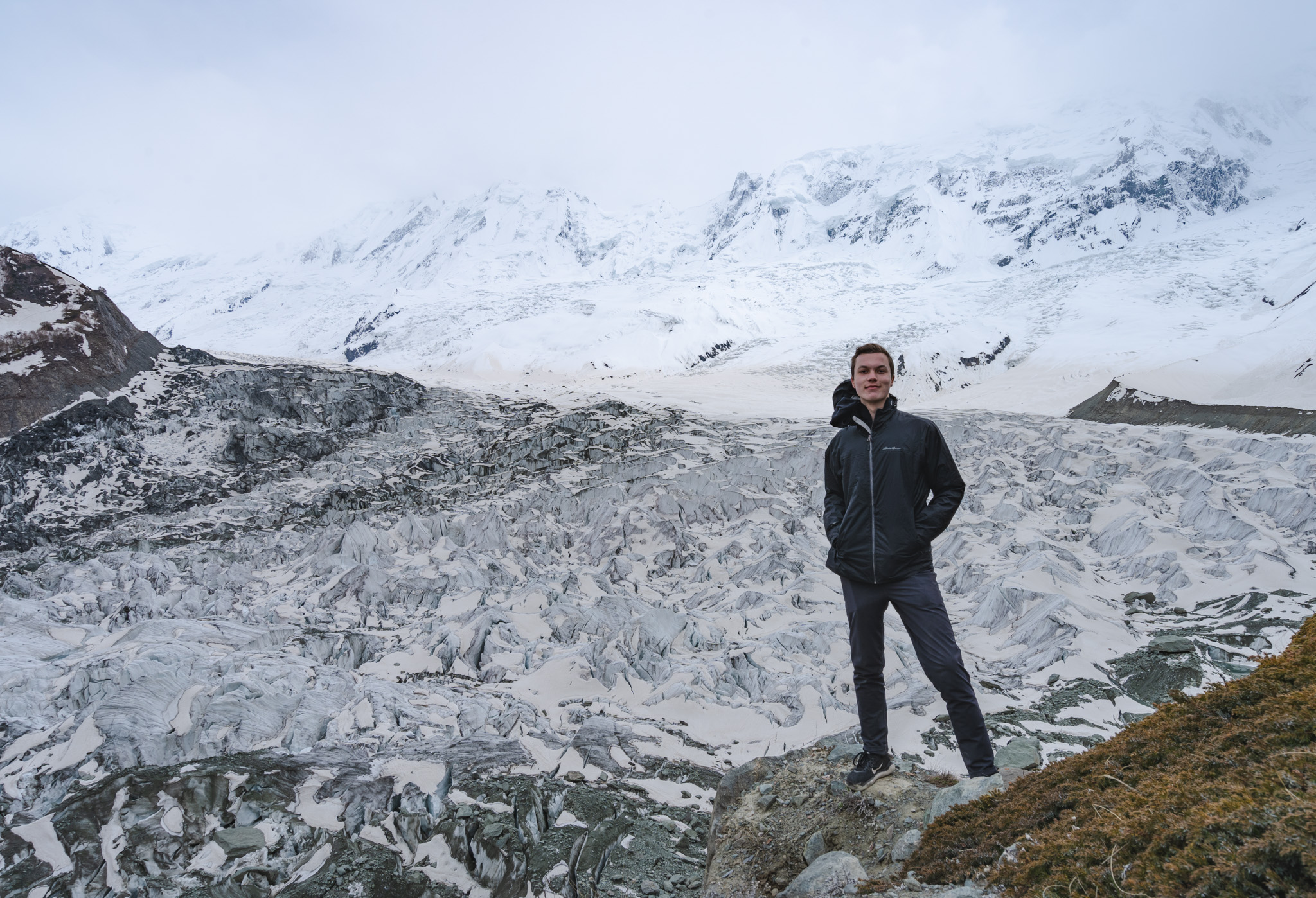
Karimabad (2 nights)
Karimabad is the most popular town to visit in Hunza Valley. Once upon a time, Hunza was an independent kingdom, and there are still some ancient mountain fortresses in Karimabad from that time.
Everywhere onwards along the Karakoram Highway until you reach the Khunjerab Pass can be considered part of Hunza Valley. Karimabad is in what is referred to as Lower Hunza, and the town of Passu (the next stop on this itinerary) is part of Gojal (or Upper Hunza).
The people who inhabit Hunza Valley are almost all Ismaili Muslims. They tend to be much more liberal than people elsewhere in Pakistan, and you’ll even see people drinking home-made wine here. Women in Hunza don’t usually wear a hijab, and it’s rare that people strictly observe Ramadan.
Karimabad offers some of the most beautiful views you’ll ever see – I always think back to the sunsets I got to see when I was there.
Where to stay in Karimabad
Budget: I recommend Old Hunza Inn – it’s a ‘popular’ place for foreign backpackers. Rs. 1500 for a double room
Luxury: The Hunza Serena Inn is the best place to stay in Karimabad if you’re looking to treat yourself. This fantastic hotel has great facilities considering its location and even has fast WiFi available.
Check the latest Hunza Serena Inn prices here
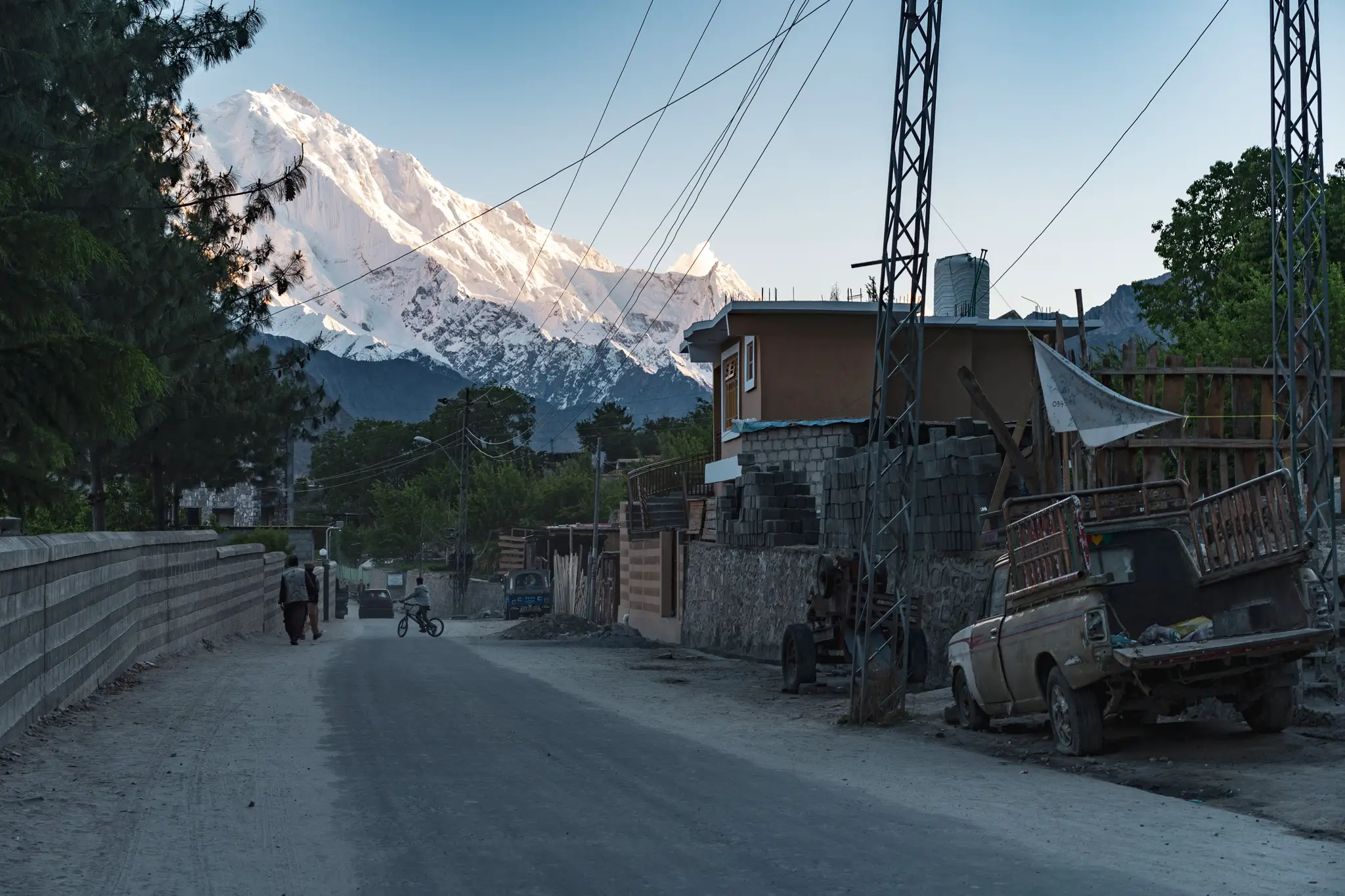
Attabad Lake (quick stop)
During your trip from Karimabad to Passu, you should stop off at Attabad Lake for a little while. It’s a beautiful blue lake located directly on the Karakoram Highway.
Despite its beauty, the story of how Attabad Lake came to be is quite sad. In 2010, a massive landslide fell onto Attabad Village, killing 20 people and completely blocking the Hunza River. Over the next few months, the lake began to form. The flooding displaced over 6000 people and stranded many more (the Karakorum Highway was cut off by the landslide).
Nowadays, the situation is stable. The Karakorum Highway was re-routed around the lake using a series of tunnels, and locals offer boat rides to tourists on the water that covers their former homes. However, when you’re standing at the shores of Attabad Lake, it’s hard not to think about the 20 souls that lie beneath it.
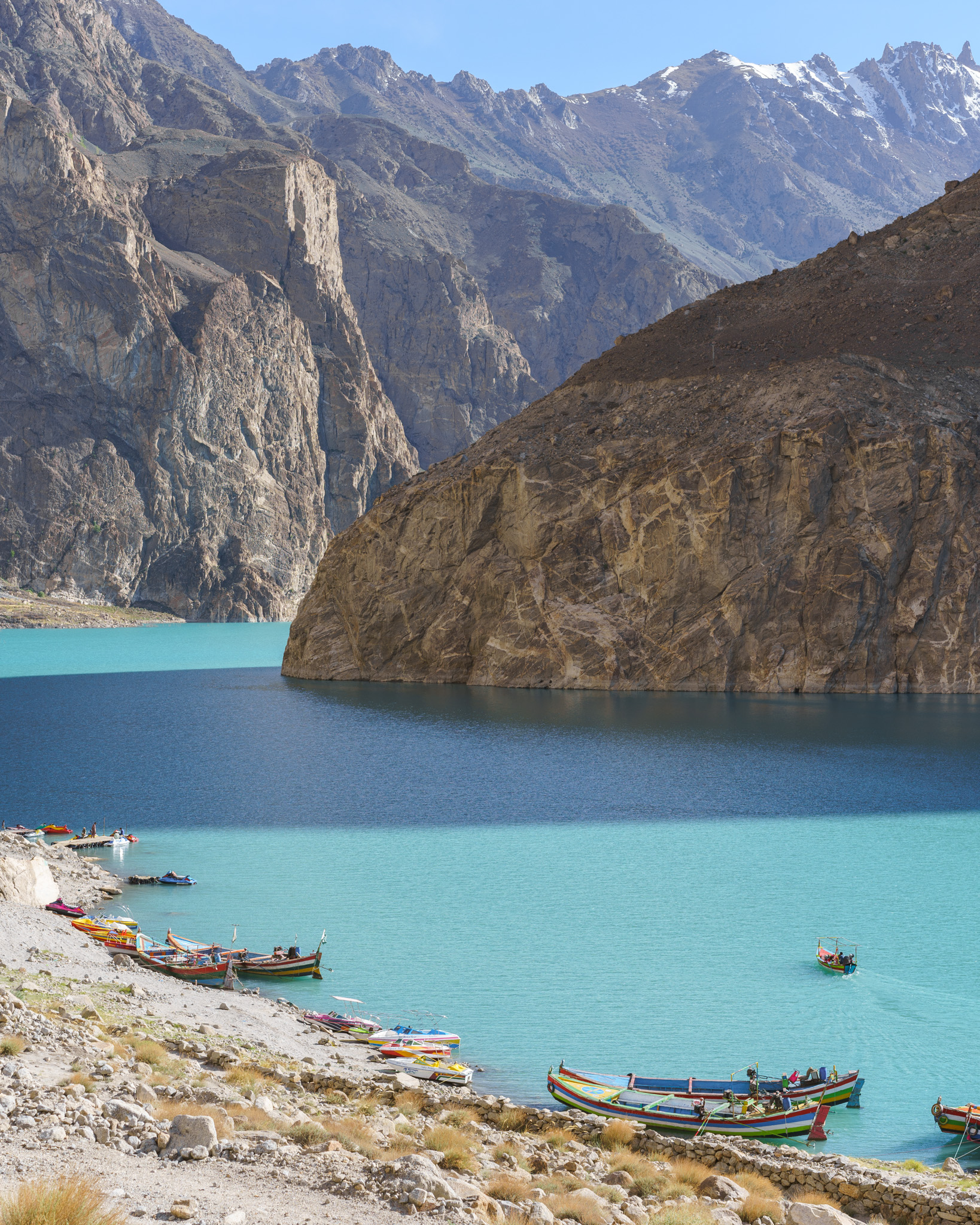
Passu (1 night)
Passu is one of the most stunning places I’ve ever been to. It’s a tiny town located directly on the Karakoram Highway and is surrounded by some of the most unique mountains in the world.
The star of the show is the Passu Cathedral Range. It’s a massive collection of jagged peaks topping out at 6,106 meters above sea level. It looks absolutely unreal at sunset.
There are quite a few day hikes that are possible from Passu, such as the one to the Passu Glacier or to the Passu and Hussaini bridges. I’d recommend doing the Passu to Hussaini bridge hike, it takes about three hours and isn’t too difficult (except for the scary bridge crossings).
Where to stay in Passu
In Passu, you can stay at the Passu Inn located right on the KKH. It’s a bit pricey for Pakistan standards at Rs. 2000 for a double, but it does have functional WiFi and a restaurant. The owner can also help provide you with info and/or a guide to go on the day hikes.
Passu Peak Inn is a slightly cheaper option but has more basic facilities.
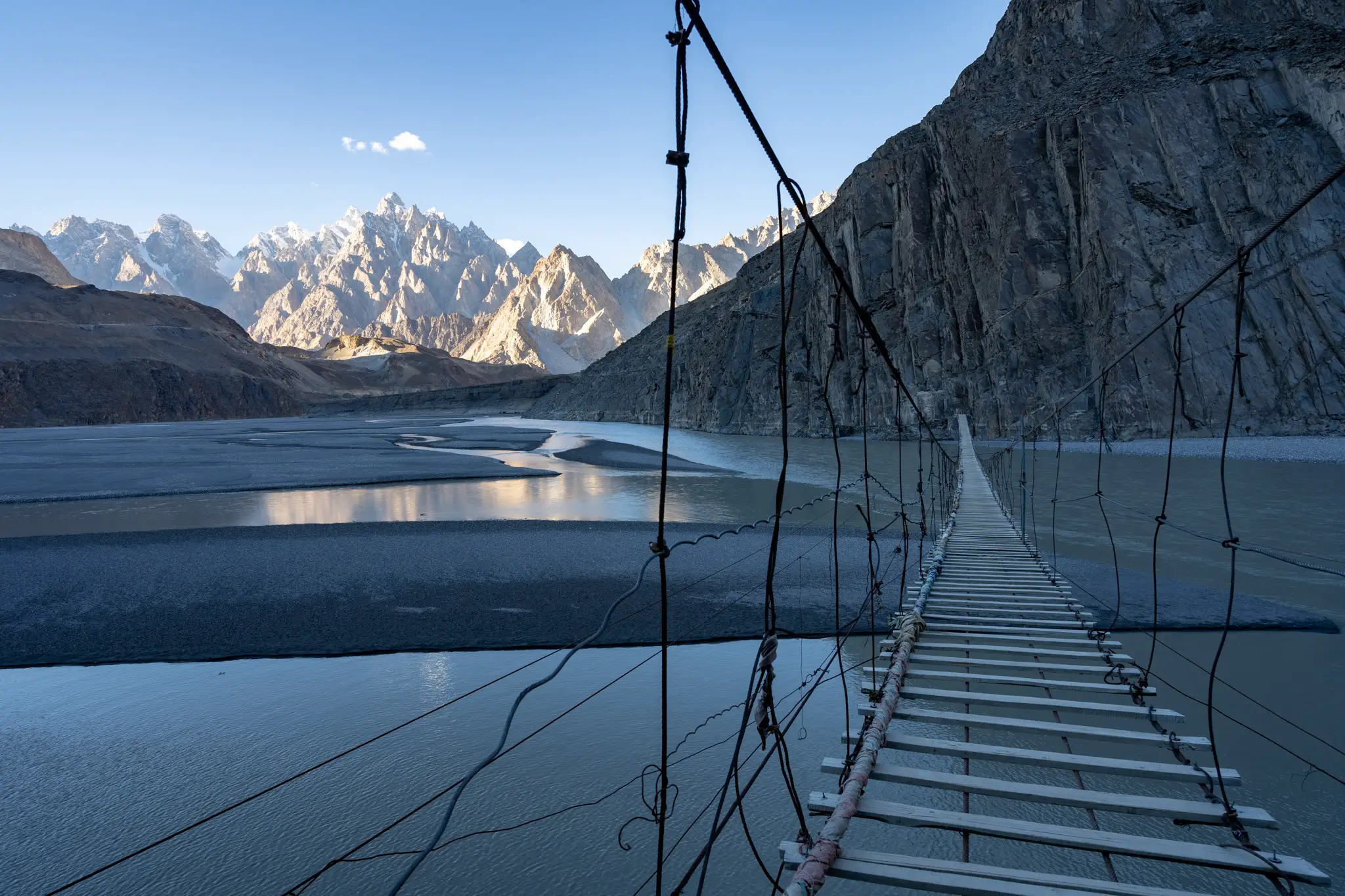
Sost (1 night)
Sost is a small town a little further up the KKH from Passu. It’s got a pretty unique frontier feel to it, as it’s full of colourful trucks heading to/from China.
Sost is the final town on the Pakistani section of the Karakoram Highway. After Sost, the road winds up the Khunjerab Pass and then descends into China.
Where to stay in Sost
I highly recommend the Asia Star Hotel in Sost. For a double room, I paid Rs. 1000. It’s run by the very friendly Liaquat Khan, and he cooks some delicious Chinese food (he worked as a chef in China for a few years). Surprisingly, this hotel even has functional WiFi!
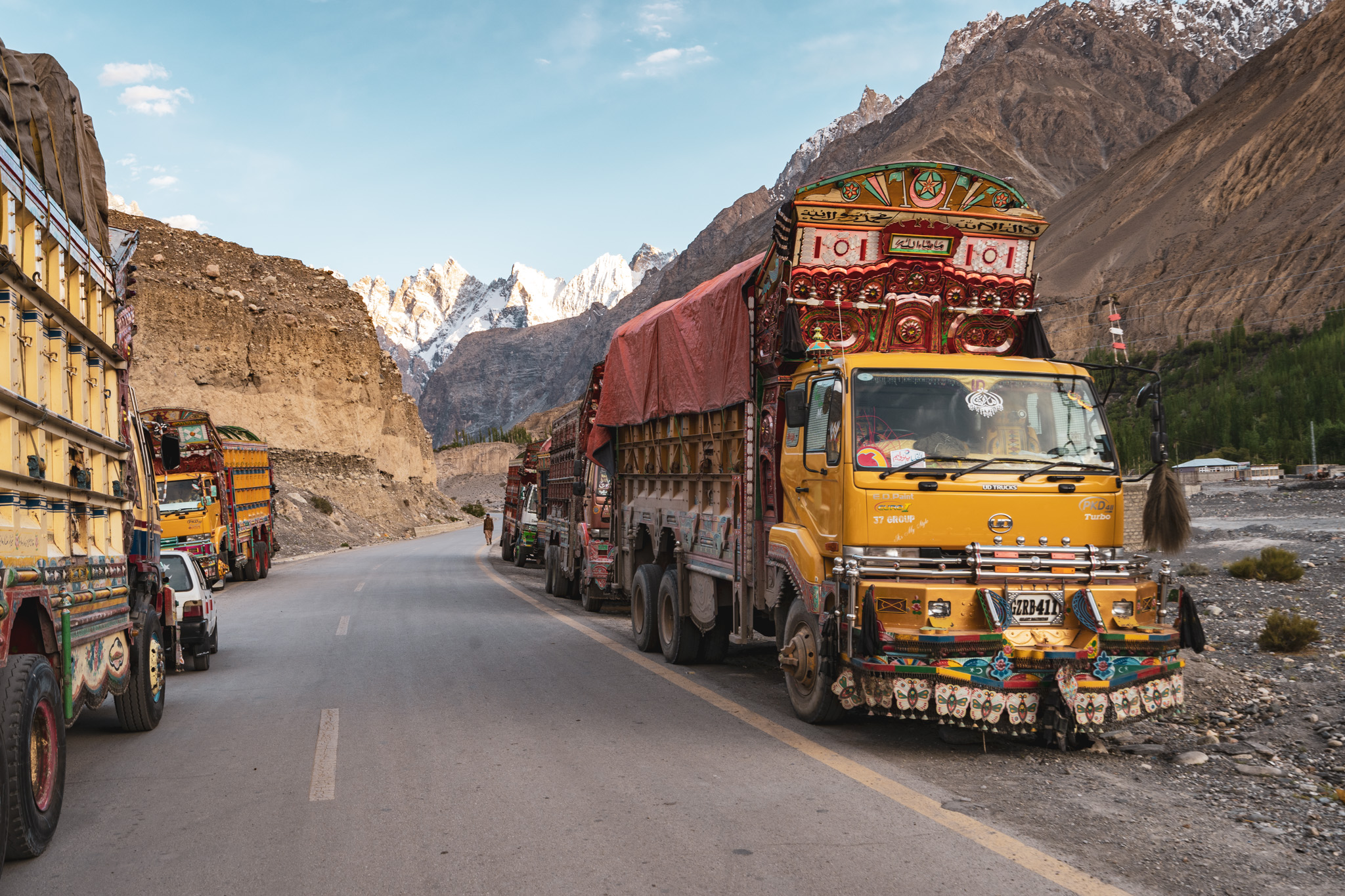
Tashkurgan, China(1 night)
Tashkurgan is an interesting place to spend a night. It’s a small city by Chinese standards but will be the largest town you’ve been in since you left Gilgit. Most of Tashkurgan’s population is actually ethnically Tajik (Pamiri and Wakhi), which makes sense when you look where it’s located on a map.
Where to stay in Tashkurgan
In Tashkurgan, you should stay at the K2 International Youth Hostel. It’s a large hostel with WiFi, hot showers, and even a bar – perfect place to have a beer after being in dry Pakistan!
Dorm rates were ¥49 for a 12-bed or ¥59 for a six-bed.
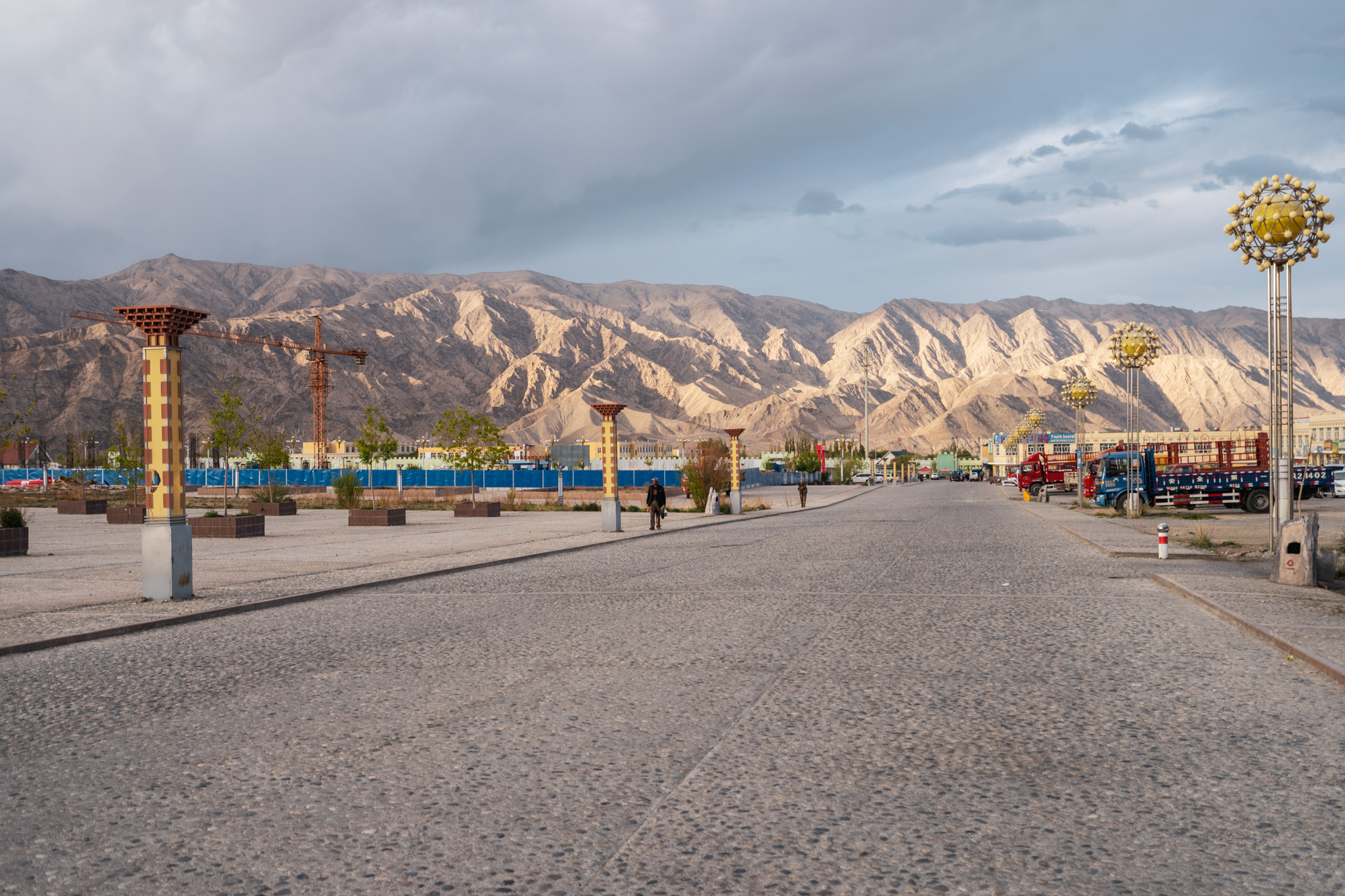
Kashgar (2 nights)
Kashgar was once upon a time one of the most important cities along the Silk Road. Nowadays, few of its historical sights remain. However, it’s still an interesting city for a couple of days to mark the end of your Karakoram Highway journey.
In Kashgar, be sure to check out the Id Kah Mosque and wander around it’s recently ‘restored’ old town. If you’re there on a Sunday, you can visit the famous Kashgar Sunday livestock market.
Where to stay in Kashgar
One of the few places that will accept foreigners in Kashgar is the Old Town Youth Hostel. It’s a decent hostel, and you’ll likely meet the few other foreigner backpackers who are in the city at the time.
Check the latest Old Town Youth Hostel prices here
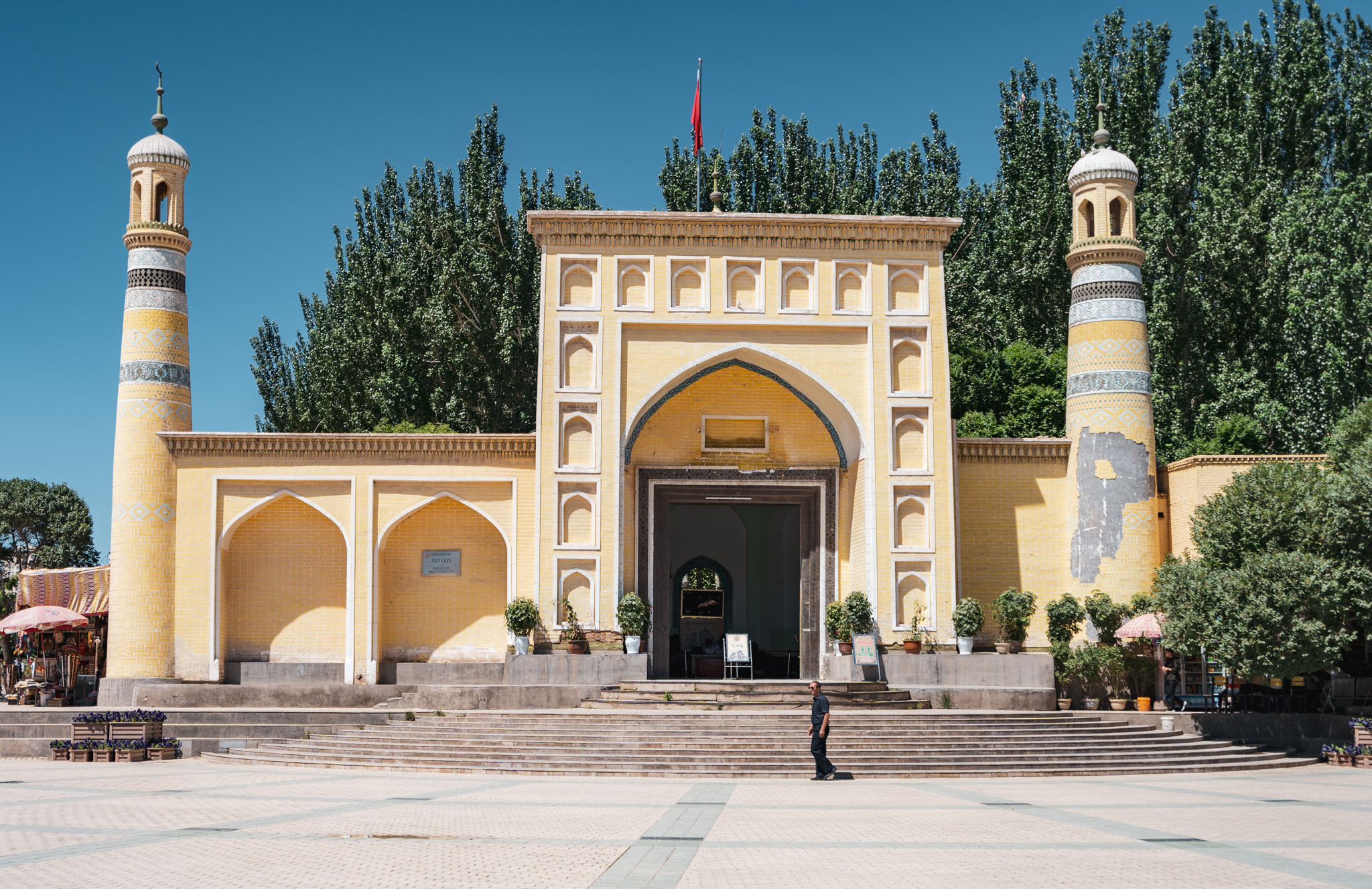
Transporation along the Karakoram Highway
You’ve got a couple of different transportation options available to take along the Karakoram Highway, depending on your personal travel style and budget. Personally, I used a mix of public transportation and hitchhiking during my trip.
Public Transport
Public transportation can take you all the way along the Karakoram Highway for very cheap. Here are the details for each stage of the trip:
Islamabad to Gilgit
There are a number of overnight buses running from Islamabad to Gilgit. NATCO operates busses that depart Islamabad at 7 pm, 8 pm, and 9 pm, although it’s been reported that foreigners are only allowed to take the 9 pm bus.
The ride should take about 18 hours and cost you Rs. 2500.
If you’re really short on time, it’s also possible to fly from Islamabad to Gilgit, but it will cost more. Flights in Northern Pakistan are frequently cancelled, so always have a backup plan.
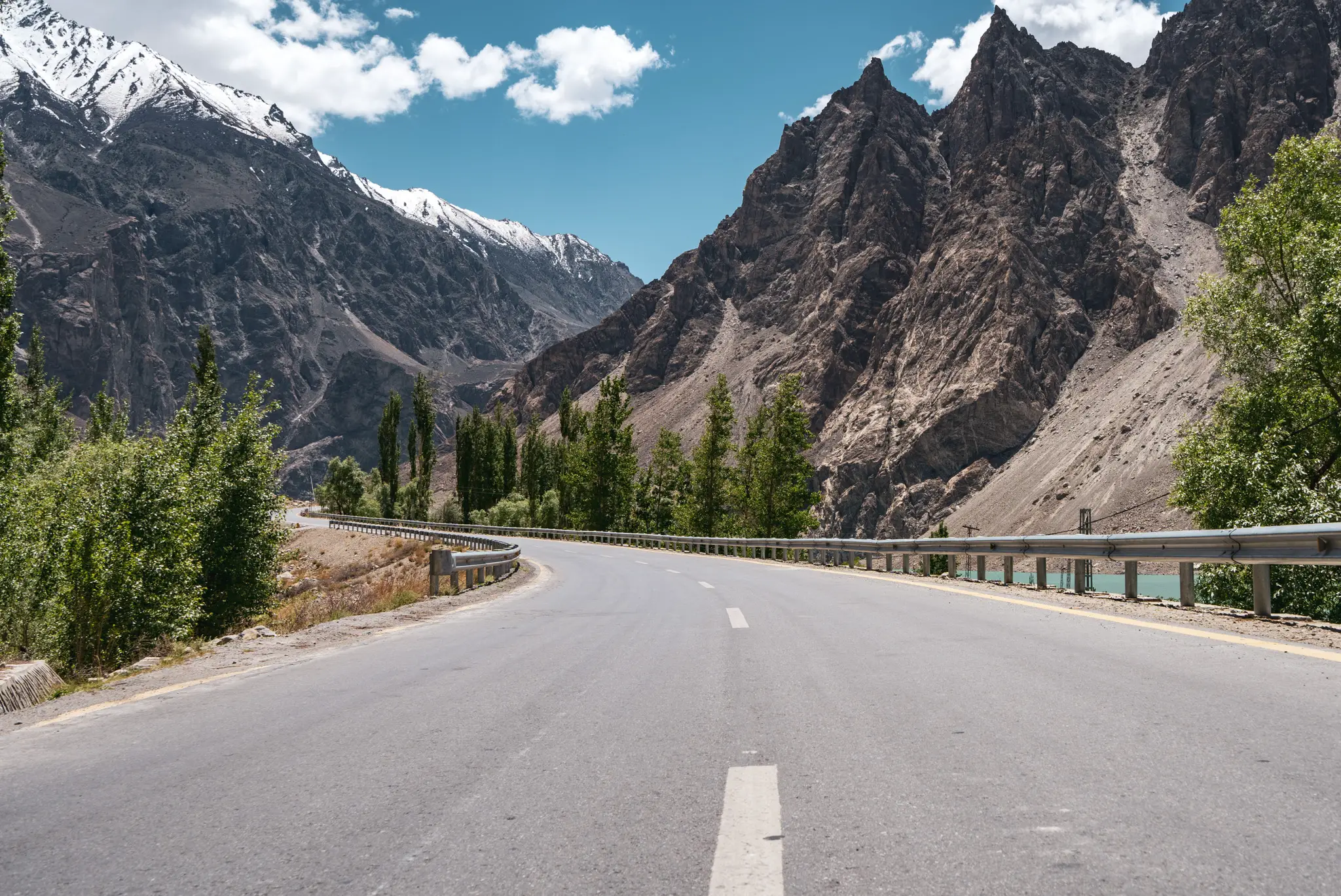
Gilgit to Fairy Meadows
To get to Fairy Meadows, you first need to get to Raikot Bridge, which is located an hour backwards along the Karakoram Highway. You can asked to be dropped there when you’re on your overnight bus to Gilgit, or you can take any minivan that is heading towards Chilas from Gilgit.
From Raikot Bridge, you must pay for a jeep to take you along the rough road to Fairy Meadows. This costs about Rs. 8000 for the entire jeep (round-trip), so try to split it with other travellers if you can.
To get back to Gilgit from Fairy Meadows, it’s easy to hitch a ride with any vehicle travelling along the KKH towards Gilgit.
Gilgit to Minapin
From Gilgit, infrequent minivans depart to Minapin. The drive takes about 1.5 hours and shouldn’t cost more than Rs. 200.
I recommend hitchhiking along this route, it’ll be more comfortable and faster.
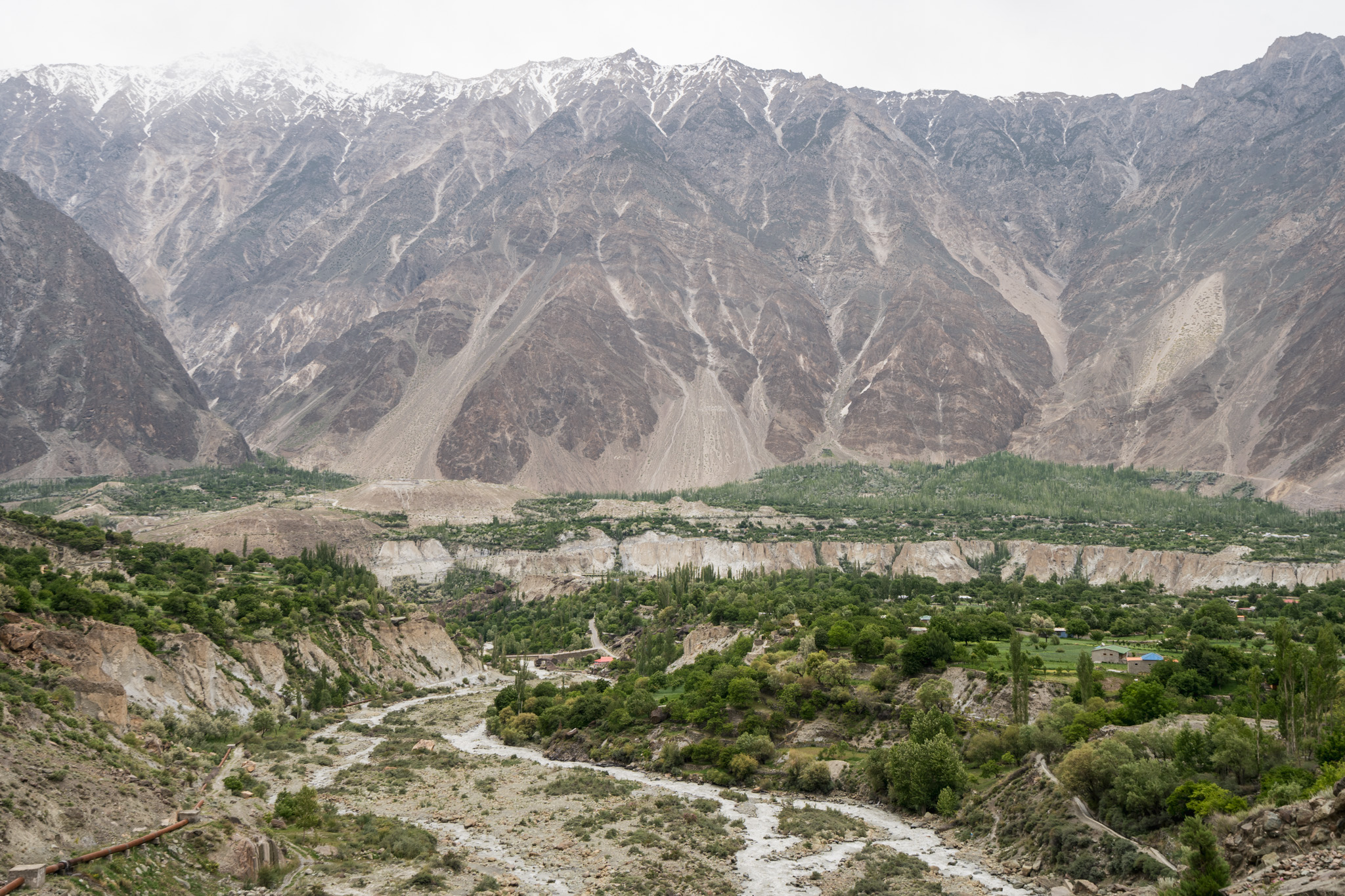
Minapin to Karimabad
You’ll need to walk back to the main Karakoram Highway from Minapin (about 30 minutes), and then you can take any minivan that passes by. Most minivans will drop you in the town of Aliabad, and from there you can take a 15-minute local van to Karimabad for Rs. 20.
This is also an easy route to hitchhike on.
Karimabad to Passu
There are minivans from Karimabad to Aliabad. It takes about 1.5 hours and costs Rs. 100.
I recommend that you get out of the minivan when you pass Attabad Lake, so you can spend some time taking in the views there. When you’re done, hitch a ride on the next minivan that passes by and continue on to Passu.
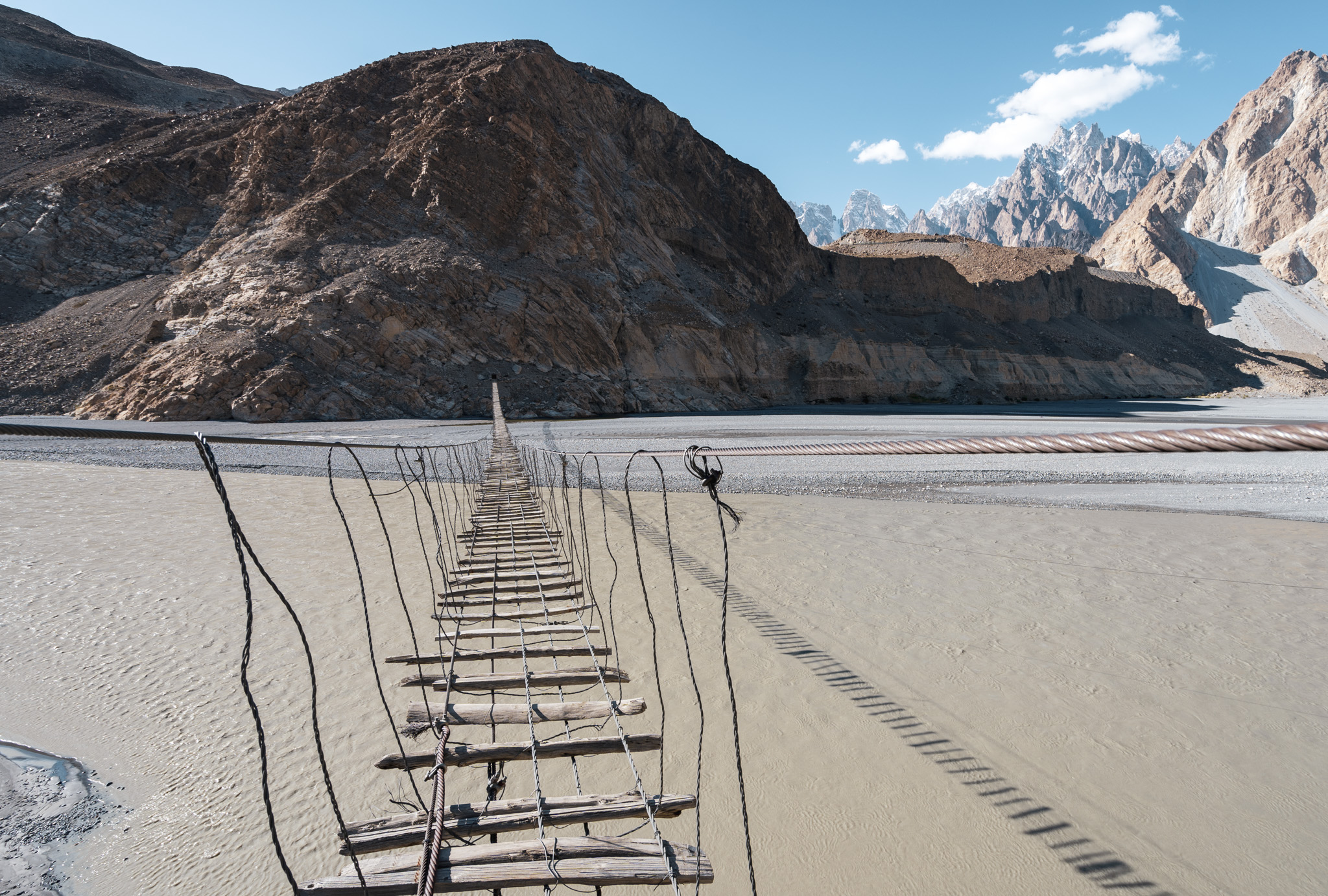
Passu to Sost
There are minivans that head to Sost from Passu – the short drive takes just 1 hour and costs Rs. 70.
Sost to Tashkurgan
From Sost to Tashkurgan, you need to cross the Khunjerab Pass into China. It isn’t possible to travel this route any other way other than via public transport.
There are a number of daily busses that make the long journey. My hotel arranged a ticket for me for Rs. 3300. This is a fairly complicated border crossing, so be sure to check out my Khunjerab Pass guide for more info.
Buses between Sost and Tashkurgan only run on weekdays.
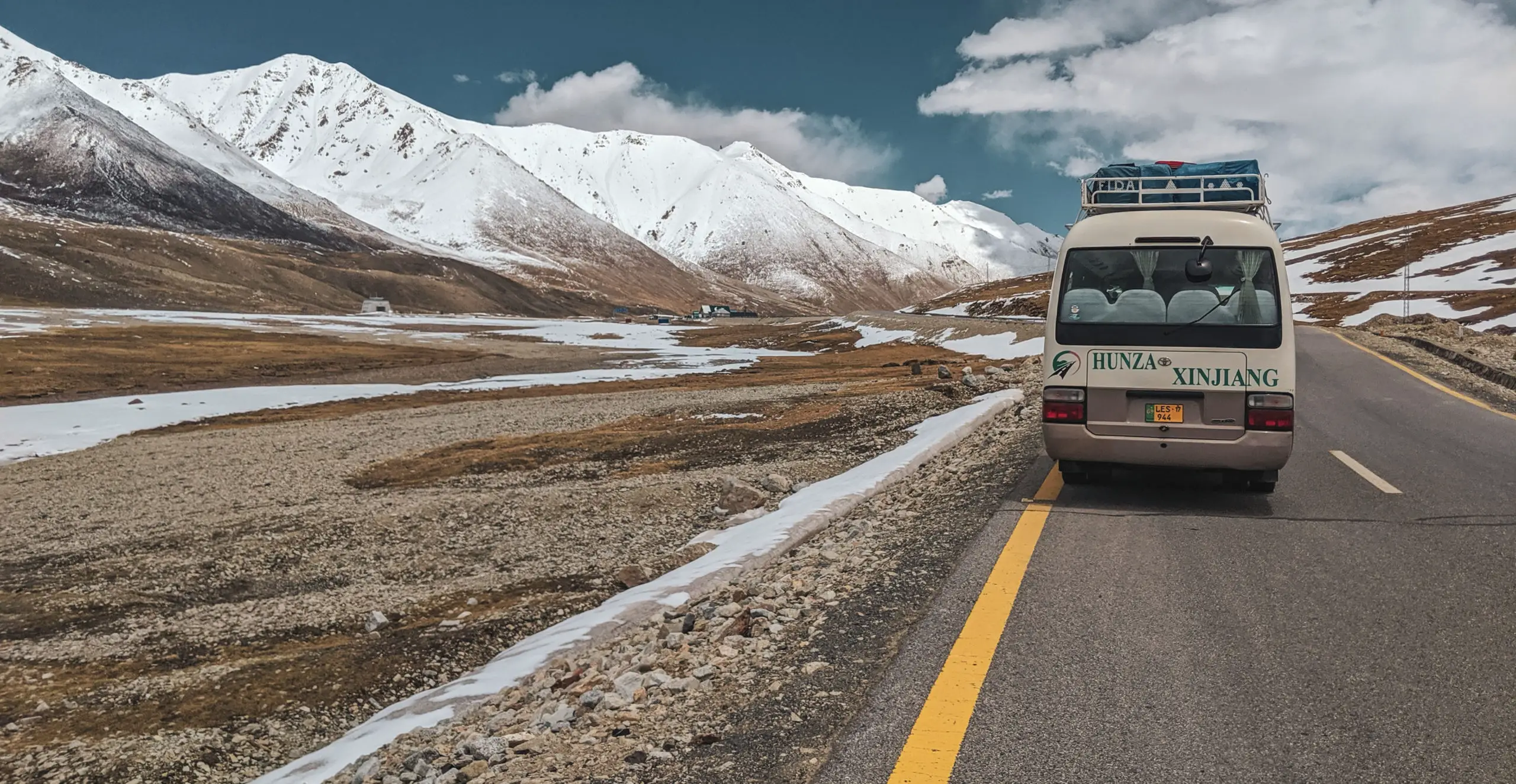
Tashkurgan to Kashgar
While there are a number of beautiful sights along the Karakoram Highway between Tashkugran and Kashgar, foreigners are not allowed to stop at them unless they’re on a tour with a Chinese company.
So, to get from Tashkurgan to Kashgar you must take a direct bus.
There is a bus that departs from the Tashkurgan Bus Station at 10 am (Beijing time). The station opens at 9 am, so get there around that time to purchase your ticket.
The 6 to 8-hour journey will cost ¥65. Try to get a window seat, as the views along the drive are absolutely stunning!
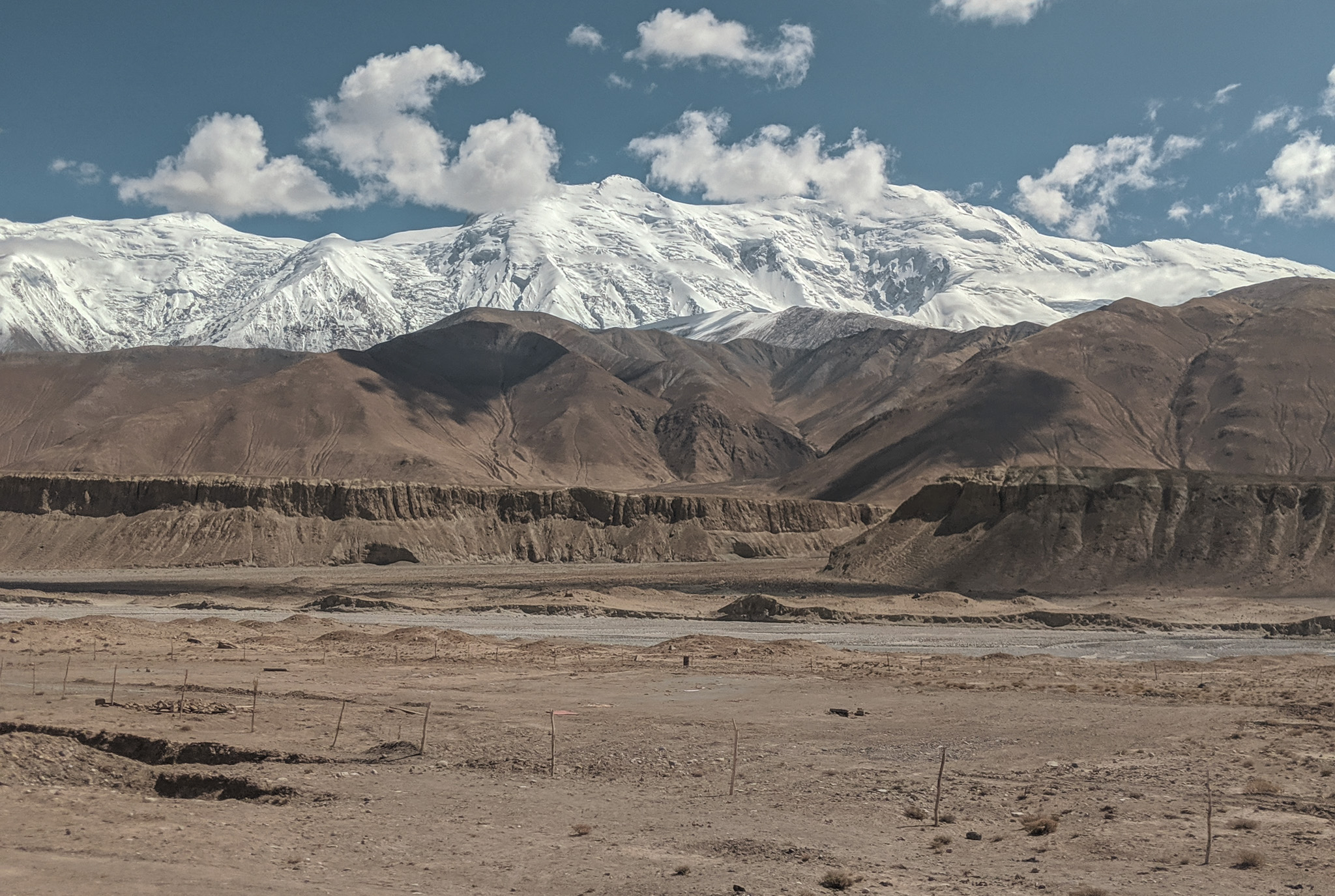
Hitchhiking
Certain parts of the Karakoram Highway are perfect for hitchhiking.
The stretch of the highway between Gilgit and Sost has frequent traffic, and people were always eager to help out a hitchhiker. I met some super friendly people while hitchhiking along the KKH, and I recommend you try it out when you’re there! It is often faster and more comfortable than the cramped public transport that exists along that stretch of the highway.
While it is possible to hitchhike from Islamabad to Gilgit, this could take multiple days and would be pretty tiring. I’d advise taking the bus for this section, and then hitchhiking onwards from Gilgit.
You are not allowed to hitchhike over the Khunjerab Pass, and I wouldn’t try hitchhiking anywhere else in Xinjiang – you’ll most definitely be stopped by the police.
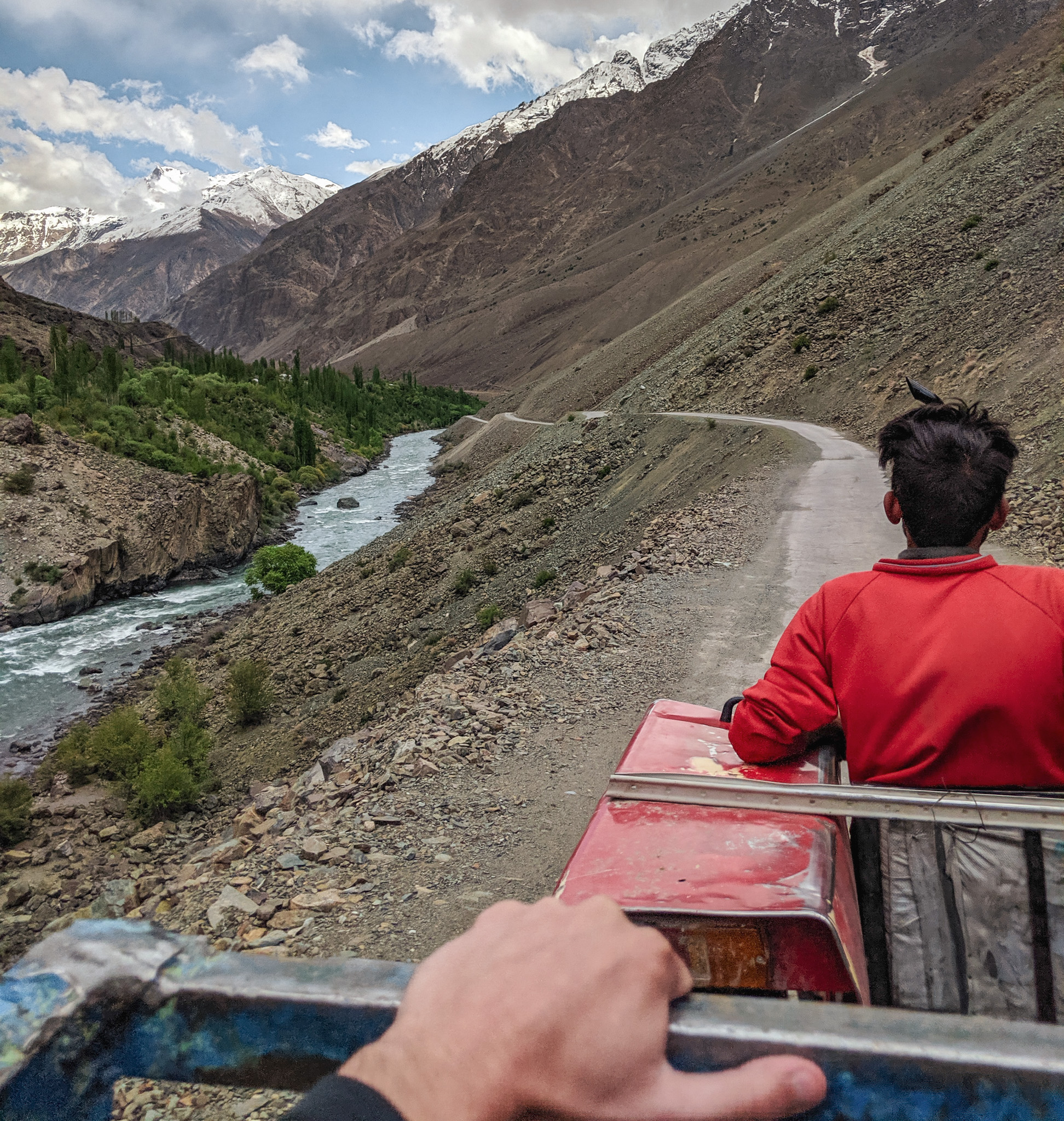
Cycling
Cycling the Karakoram Highway is a dream trip for cyclists all over the world. Road conditions are pretty good due to Chinese investment, and with a bicycle, you’ll be able to stop whenever you want for photos – sounds perfect to me!
You aren’t allowed to cycle into Xinjiang unless you spend a lot of money on a Chinese vehicle escort, so consider sticking to just Pakistan if you want to cycle.
Hiring a Driver
The most expensive way to travel the KKH would be to hire a driver. There are quite a few travel agencies out there that could arrange this for you, and I’m sure it would be easy to do on the ground in Islamabad.
With a private driver, you’ll be able to go wherever you want and stop whenever you want, so this could be a good option if you’re not on a tight budget!
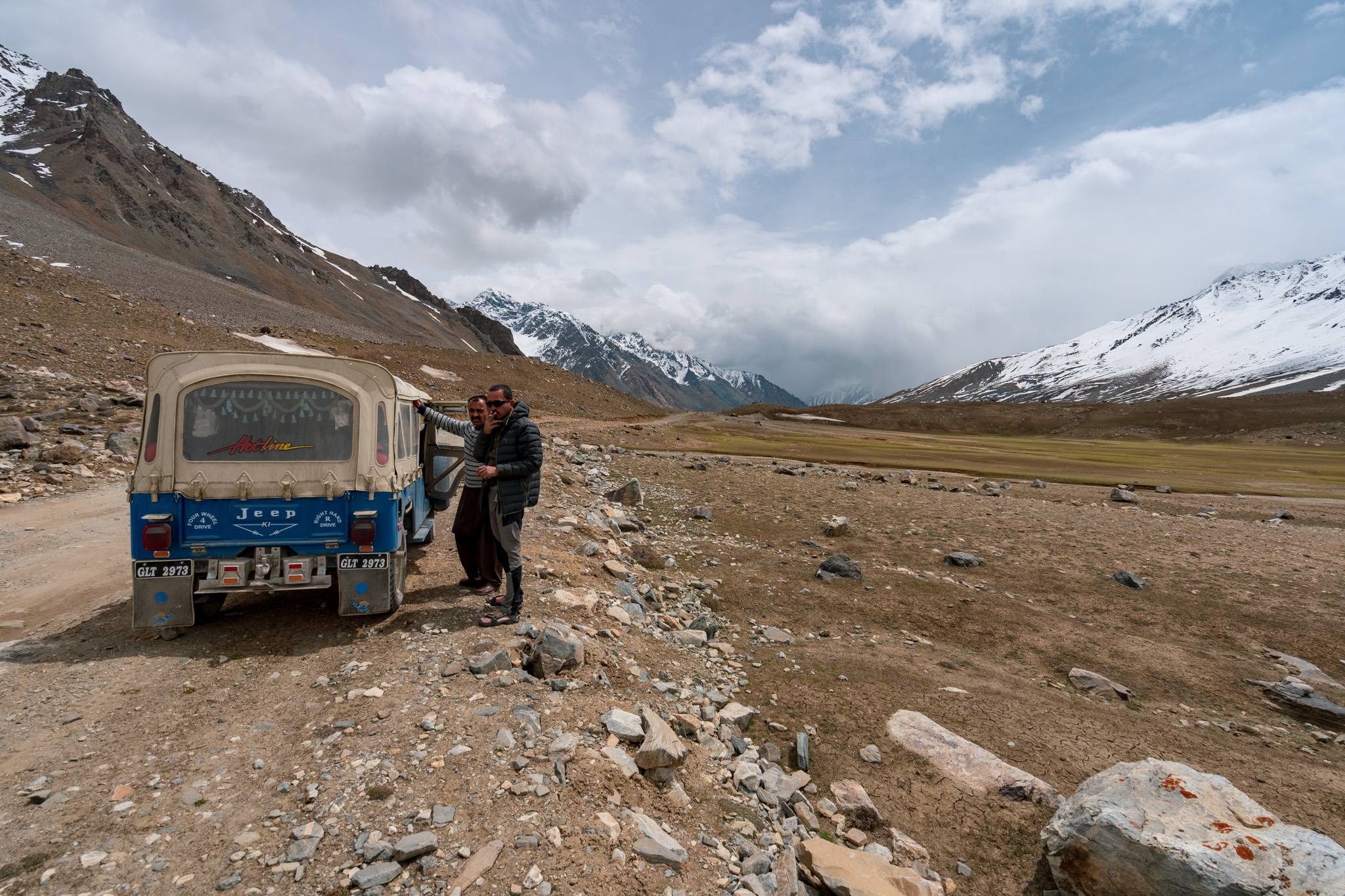
Karakoram Highway Wrap-Up
I hope this post has helped you plan your Karakoram Highway adventure. The road really is one of the most stunning in the world, and you won’t regret choosing it as your next destination.
If you have any questions about travelling the highway, feel free to ask me in the comments below!
In the meantime, check out some of my other posts about this beautiful part of the world:
- 65 Useful Tips for Travelling in China – Everything you need to know about backpacking in China! Check it out to figure out what to do after your Karakoram Highway trip.
- Backpacking Pakistan: The Ultimate Travel Guide & Itinerary – More info on travelling in Pakistan.
- Khunjerab Pass Guide: Border Crossing from Pakistan to China – Complete guide to the border crossing along the Karakoram Highway
- 10-Day Pamir Highway Itinerary: A Backpacker’s Guide – Another one of the world’s most epic road trips – check out my guide if you’re interested in Central Asia!
- How to Hike to Rakaposhi Base Camp – Complete Guide – You should check out Rakaposhi Base Camp if you head to Pakistan, so here’s my complete guide to the day hike!
Safe travels!
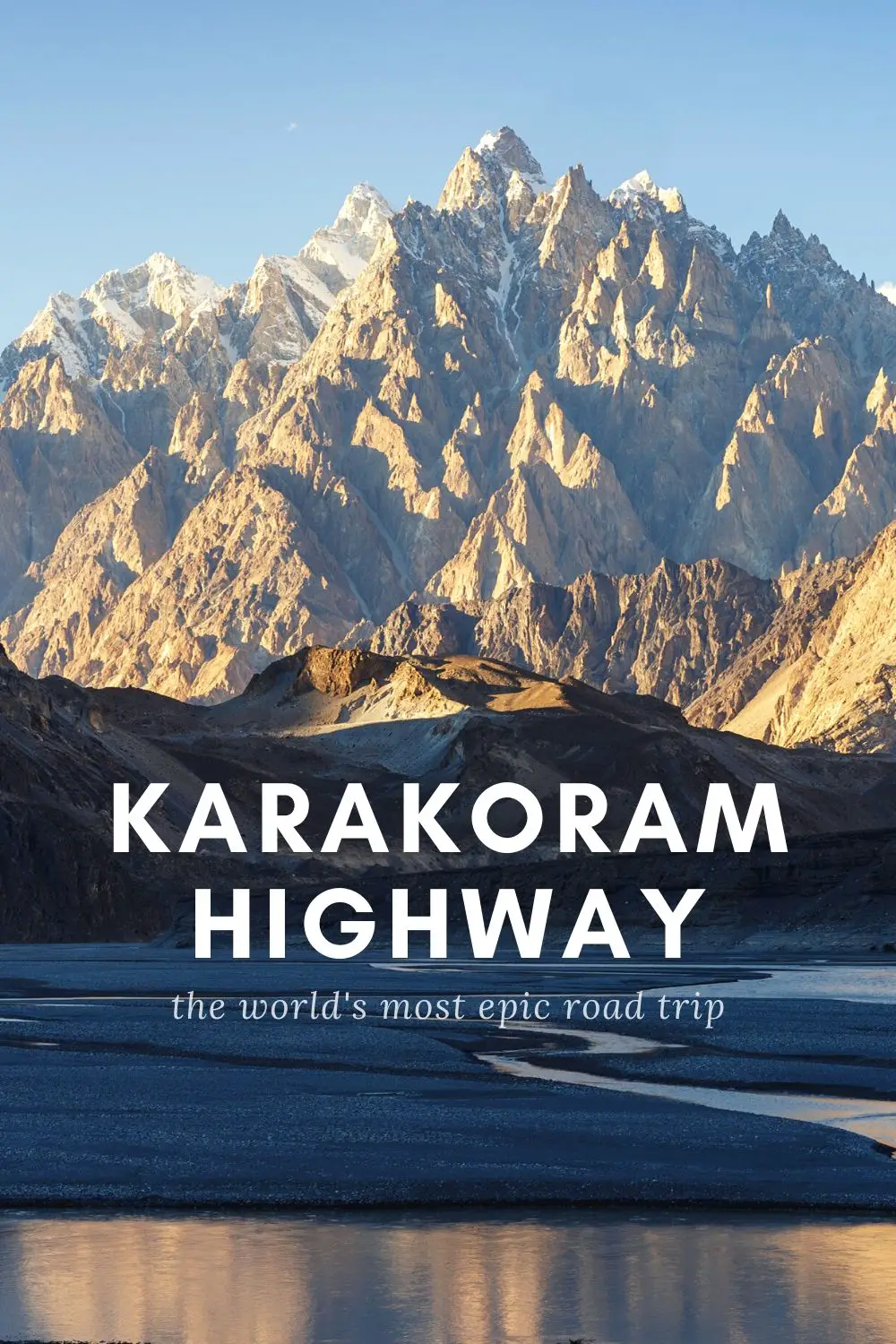
Yay transparency! There are affiliate links in this guide. If you book or buy something using my links, I’ll make a bit of money at no extra cost to you.

21-year old Canadian dude who loves to visit off-the-beaten-path places, climb tall mountains, and try delicious foods.
